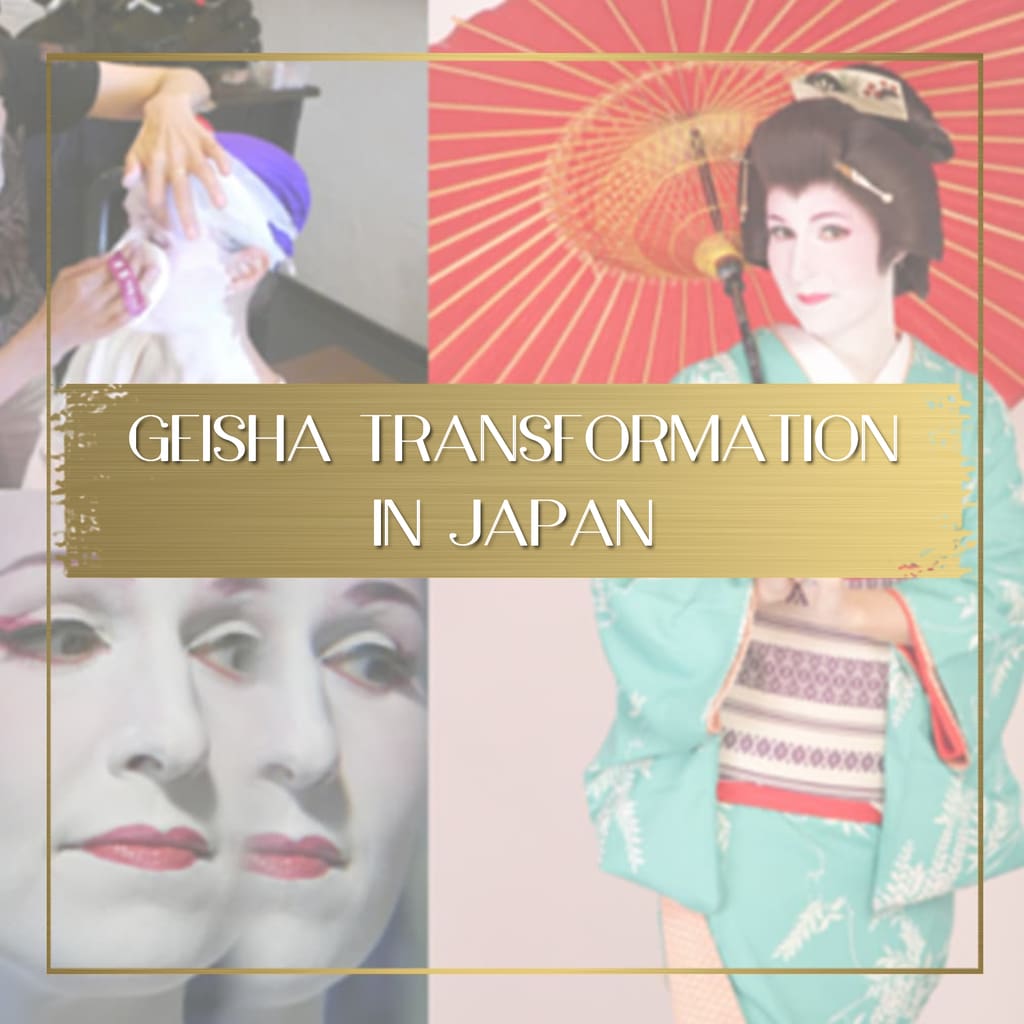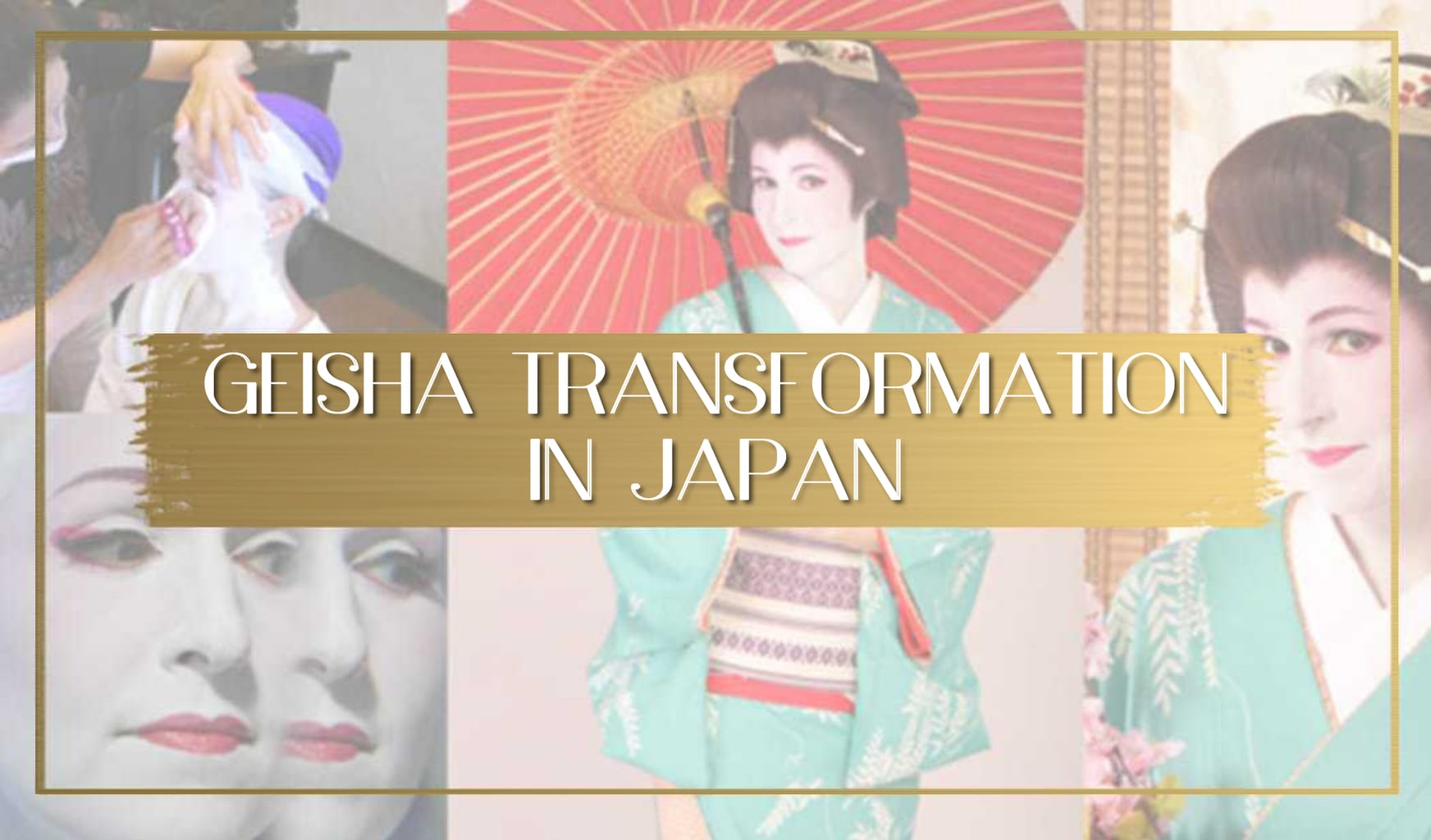Traditionally, a Geisha was a Japanese entertainer and hostess who would mainly perform and entertain a male audience. The word’s meaning lies in two kanji characters, one for “art” and the other for “person”. So the word Geisha is best translated as artist.
Interestingly, the image that we have of a Geisha, with the white paint and the elaborate hairstyles, is actually that of an apprentice Geisha, or Maiko, although not all Geisha will go through the apprenticeship. If a candidate is already 21 or above when debuting as a Geisha, she will not have to be a Maiko first.
For further reading when you’re done with this article, here’s our complete guide of the best things to do in Japan for first time or even seasoned travelers. We have also written about the most delicious Japanese food to try, a complete shopping guide to Tokyo and some inspirational facts about Japan to know before you go.
Origins of Geisha culture
You can find the origins of Geisha culture at the end of the 8th century, when the Japanese capital moved to Kyoto and an obsession with beauty started to emerge.
In Shintoism, faithfulness to one’s wife was not expected and love did not have to come from marriage. Instead, men would seek sex and enjoyment from the courtesans and they expected their wives to be good mothers and sober home managers. The government legalised Prostitution within the confines of the brothels (or yukaka) in the 16th and 17th centuries. Therefore many modern day yukaka sprang up at that time. The women who performed there were classified according to their class. And the highest level was the Geisha’s predecessor, the Tayuu, known for their erotic kabuki dances, the ones that made Asakusa famous at the time.
With time, these performers started to specialise and perfect the trade, some even becoming skilled calligraphers or dancers. A new profession, not involving sex but purely focused on entertainment, started to emerge. They called them Geisha which was at the beginning of the 18th century.
But at that time, Geisha were actually chaste male dancers that would entertain the high-class homes of the samurai. With time, some of the female prostitutes and entertainers started to call themselves Geisha too and the name moved to the female gender, slowly evolving out of prostitution and into pure entertainment. Because of competition with the courtesans, Geisha, who were within the confines of the pleasure quarters, were not allowed to sell sex so they focused on becomming great companions instead, providing good conversation, music, etc. In that separate world of pleasure, they say that Geisha inhabited the high class world of “the flower and willow”. The courtesans were the colourful flowers and the Geisha the willows.
The Geisha culture and profession declined during WWII when the government forced women to work in the factories to support the war. In 1944 Geisha establishments closed down. The law allowed them to reopen one year later, but the profession never recovered. In addition, Asakusa, where most of the kabuki theatres were located, was mostly flattened out during the war.
At its peak during the 1920s there were up to 80,000 Geisha in Japan, but today’s figure is much lower and there are perhaps only around 1,000 Geisha mostly living in the Hanamachi districts where Geisha houses are located. Kyoto is where most of the remaining Geisha are, there are also a few in Asakusa and other areas of Tokyo. Several centuries ago, Geisha would start to train at the age of 4, but modern day Geisha enter apprenticeship on their own decision after middle school.
Dressing up – Geisha make-up
Nowadays, Japanese women only dress as Geisha for special occasions or for photoshoots so there are studios specifically designed to help with that. This is what I did during my trip to Tokyo. My entire experience in becoming a Geisha, make-up and all, took about 4 hours. I did it with three other friends, one girl also dressing up as Geisha, and two guys preferring to become samurai. But if you are a man and want to metamorphose into a Geisha (including make-up), you may also do so.
The most time consuming part, also for real life Geisha, is the make-up. Although fully trained Geisha don’t always wear the entire make-up, Maiko do. The make-up takes years of practice and requires a lot of patience and skill. Because I don’t have hair that can be styled to the ornate and elaborate hairstyles of a Geisha, the first thing that we did was put our hair back, tape our foreheads as if we were getting a face lift, and then try wigs on until we found one that sat well and made us look good.
After I chose the wig, the make-up began. A wax coat tried to protect my skin from the heavy layers of white paint. The experienced Geisha make-up artist then proceeded to layer me up with white powder, dabbing a sponge until it was all properly spread out. She then moved on to the eyes and finally the lips. The make-up covered my entire face, including the neck and cleavage, as well as my back, which was shaped in a W, keeping the most erotic part of my body, my top neck, visible.
The stylists only used black and red, on top of the white. They used red on my cheeks and the corner of my eyes. The stylist also gave me fake eye lashes to make my eyes larger, and then she painted my lips in bright red lipstick. At the end of my make-up session I became completely unrecognisable and transformed into someone else. If they weren’t sitting there from the beginning seeing it all unravel, my friends would not have known it was me. Add the wig and I was a complete stranger.
Choosing the kimono
Traditionally, kimono used by Maiko and Geisha are not the same and their level of intricacy and colours determine their class. Some of the kimono can take up to three years to create with delicate embroidery in silver and gold. But for the purpose of my shot I just had to choose one that I liked. I went for turquoise. Because, why not?
Putting the kimono on was no mean feat. I needed three people around me to dress up. They wrapped me around and around in various layers of clothing with obi (the belt tied around the waist). I had to put on lots of undergarments. After positioning it correctly, the stylist fixed the entire look and feel and made sure that the angles of the kimono were right. Since these kimono were a bit short, they did not give us the typical wooden sandals. They did give us our split toe white socks though. All dressed up, I could barely move.
Photoshoot
You could choose from various packages including printed photographs, you could also take the entire digital set of images. Each of us got about half an hour or so’s worth of photos and then we could also take more. There was no real limit as to how many photos we could take. But let me tell you, since I was all kitted out and with the wig on, I started to develop a strong headache after 3.5 hours. So, I desperately wanted to take it all off. The wig was so heavy and they pulled my hair and forehead skin back so tight that I started to get a migraine.
We chose a few poses from a book and aimed for those. This included props like a red paper umbrella and some flowers, against a backdrop of tatami mats and flower patterned walls. For every shot, the stylist positioned my hands, leg, kimono and look in the exact elegant and perfect manner of a real Geisha. I was delicate, subdued and enigmatic, staring into oblivion and looking rather empty. So it was as if I were living in the separate world of “flowers and willows”.
I booked my experience with Studio Geisha Cafe and you can reach out to them on taiyokatsuraten@live.jp. Bookings need to be made in advance and paid in full.

